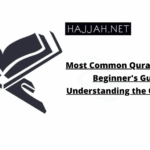Unveiling Modesty: The Women’s Dress Code in Islam – The topic of women’s dress code in Islam carries profound cultural and religious significance. It is an area often misunderstood or misrepresented, leading to misconceptions and stereotypes. This article aims to shed light on the subject, exploring the concept of modesty in Islam and the diverse expressions of the women’s dress code. Through an examination of hijab, abaya, niqab, and cultural variations, we will unveil the multifaceted nature of modesty within Islamic teachings.
Introduction
Modesty is a cherished virtue in Islam, emphasizing humility, dignity, and decency in all aspects of life. The dress code for women, in particular, reflects this principle and holds a prominent place in Islamic teachings. Understanding the women’s dress code is crucial to appreciating the significance of modesty in Islam and dispelling misconceptions.
Modesty in Islam
Modesty, known as “hayaa” in Arabic, is deeply rooted in Islamic values. It encompasses modest behavior, speech, and attire. Modesty is considered a means of guarding one’s chastity, displaying self-respect, and maintaining harmonious social interactions. The dress code plays a vital role in manifesting and preserving this virtue.
Also Read
The Purpose of the Women’s Dress Code
The women’s dress code in Islam serves multiple purposes. It aims to uphold modesty, preserve individual dignity, and foster societal harmony. By adhering to the dress code, women demonstrate their commitment to Islamic principles while contributing to a respectful and modest environment.
Hijab: A Symbol of Modesty
The hijab, widely recognized as a symbol of modesty, refers to the Islamic headscarf. It represents a woman’s commitment to maintain modesty and devotion to her faith. Hijab comes in various forms, such as the hijab, shayla, al-amira, and khimar, providing women with choices to express their identity and faith.
Wearing hijab is a personal choice influenced by religious beliefs, cultural norms, and individual convictions. Contrary to popular misconceptions, hijab is not a symbol of oppression but rather a symbol of empowerment. It allows women to control the visibility of their beauty and redirect the focus onto their character, intellect, and inner qualities. Hijab empowers women to define their identity beyond physical appearances and embrace their faith with pride.
Abaya and Niqab: Cultural Variations
In certain regions, Muslim women may choose to wear additional garments such as the abaya and niqab. The abaya is a loose-fitting cloak that covers the entire body, while the niqab is a face-covering veil that leaves only the eyes visible. These cultural variations reflect the diverse customs and traditions within the Muslim community.
It is important to recognize that the abaya and niqab are not mandatory in Islam but rather cultural practices that some women choose to adopt. It is crucial to respect these choices as expressions of personal faith and cultural identity. Stereotyping or generalizing these practices can perpetuate misunderstandings and undermine the autonomy of Muslim women.
Dress Code in Different Cultures and Regions
The dress code among Muslim-majority countries can vary significantly due to diverse cultural influences. Each region has its own traditional attire that incorporates Islamic modesty while reflecting local customs. For example, in South Asia, women may wear the shalwar kameez or saree with a headscarf, while in the Middle East, the abaya or jalabiya is commonly worn.
This diversity highlights the beauty of Islam’s adaptability to different cultural contexts. It underscores the importance of understanding that modesty can be expressed in various ways, and there is no singular, rigid dress code that applies universally to all Muslim women.
Misconceptions and Misinterpretations
The women’s dress code in Islam often faces misconceptions and misinterpretations. It is important to address and dispel these misunderstandings to foster a more inclusive and respectful dialogue. One common misconception is that women are forced to comply with the dress code against their will. In reality, the decision to observe the dress code is a personal and voluntary choice rooted in faith and personal convictions.
Another misconception is associating the dress code solely with oppression or suppression of women’s rights. However, it is essential to distinguish between cultural practices and religious obligations. Islam promotes gender equality and emphasizes mutual respect between men and women. The dress code should not be viewed in isolation but within the broader context of Islamic teachings and values.
The Empowerment of Choice
One of the fundamental aspects often overlooked is that the women’s dress code allows for personal agency and choice. Muslim women have diverse interpretations of modesty and express their faith through their unique style and preferences. They have the autonomy to select clothing that aligns with their religious values while embracing their personal identity.
It is crucial to recognize and celebrate the stories of empowered Muslim women who confidently navigate the intersection of faith and fashion. They demonstrate that modesty is not restrictive but rather liberating, allowing them to showcase their individuality while adhering to their religious beliefs.
The Role of Men and Society
Upholding modesty is a shared responsibility that extends beyond women. Men play a significant role in fostering a respectful and inclusive environment where women’s choices regarding their attire are respected. Society as a whole should promote understanding and acceptance, appreciating the diversity of expressions of modesty within the Muslim community.
By cultivating an environment of mutual respect and dialogue, we can challenge stereotypes and prejudices surrounding the women’s dress code in Islam. Education and awareness can break down barriers and foster a more inclusive society where individuals are judged based on their character rather than their appearance.
Conclusion
The women’s dress code in Islam reflects the values of modesty, dignity, and respect. It is a personal choice that empowers Muslim women to define their identity, preserve their modesty, and exhibit their faith. The dress code, including hijab, abaya, and niqab, serves as a visible expression of one’s commitment to Islamic teachings and personal convictions.
It is essential to approach the topic of women’s dress code in Islam with an open mind, seeking to understand the cultural and religious significance behind it. Stereotypes and misconceptions often cloud the conversation, leading to misunderstandings and prejudice. By embracing diversity and acknowledging the autonomy of Muslim women in their choice of attire, we can foster a more inclusive society that values individual expression and religious freedom.
In conclusion, the women’s dress code in Islam is a reflection of the values of modesty, dignity, and personal choice. It is important to separate cultural practices from religious obligations, recognizing the diversity of expressions of modesty within the Muslim community. By promoting understanding, respect, and inclusivity, we can create a society where individuals are empowered to embrace their faith while contributing to a harmonious and diverse world.




